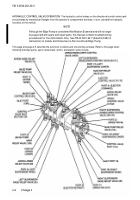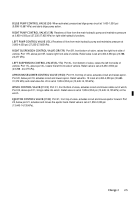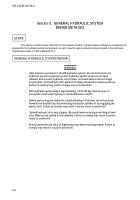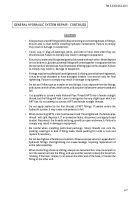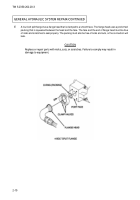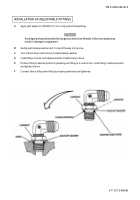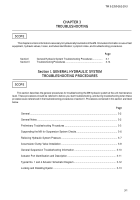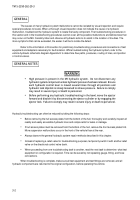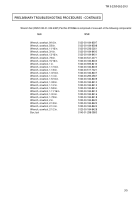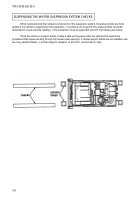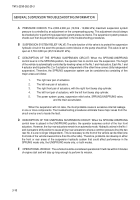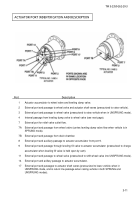TM-5-2350-262-20-3 - Page 37 of 319
3-2
TM 5-2350-262-20-3
GENERAL
The causes of many hydraulic system malfunctions cannot be isolated by visual inspection and require
special procedures to locate. When a thorough visual inspection does not indicate the cause of a hydraulic
malfunction, troubleshoot the hydraulic system to locate the faulty component. The troubleshooting procedures in
this section and in the troubleshooting procedures cannot cover all the possible malfunctions and deficiencies that
may occur on the M9. Carefully listen and observe all hydraulic actions to assist in the location of troubles. The
more symptoms that can be evaluated, the easier it will be to isolate the defect.
Refer to the information in this section for preliminary troubleshooting procedures and connections of test
equipment and adapters necessary for fault isolation. While troubleshooting the hydraulic system, refer to the
vehicle hydraulic schematic diagram Appendix E to determine flow paths, pressures, routing of lines, and position
of control valves.
GENERAL NOTES
WARNING
•
High pressure is present in the M9 hydraulic system.
Do not disconnect any
hydraulic system component unless hydraulic pressure has been relieved.
Ensure
each hydraulic control lever is moved several times through all positions and
hydraulic tank dipstick is slowly loosened to relieve pressure.
Failure to comply
may result in severe injury or death to personnel.
•
Before performing any hydraulic troubleshooting in the bowl, move the ejector
forward and disable it by disconnecting the ejector cylinder or by engaging the
ejector lock.
Failure to comply may result in severe injury or death to personnel.
Hydraulic troubleshooting can often be reduced by taking the following steps:
•
Before removing the hull access plates from the bottom of the hull, thoroughly and carefully inspect all
readily and easily accessible hydraulic lines and components for leaks or damage.
•
If hull access plates must be removed from the bottom of the hull, remove the front access plates first.
More suspension malfunctions occur in the front of the vehicle than at the rear.
•
Always observe the general hydraulic system repair methods described in this chapter.
•
Instead of replacing a relief valve for troubleshooting purposes, temporarily switch it with another relief
valve on the directional control valve bank.
•
When proceeding from one troubleshooting task to another, read the next task to determine
what test
equipment or configuration is required. Time can be saved by not repeating gauge, fitting, and hose
connections.
When troubleshooting is complete, make sure all test equipment and test fittings are removed, and all
hydraulic components are returned to the original configuration, before operating the vehicle.
Back to Top

